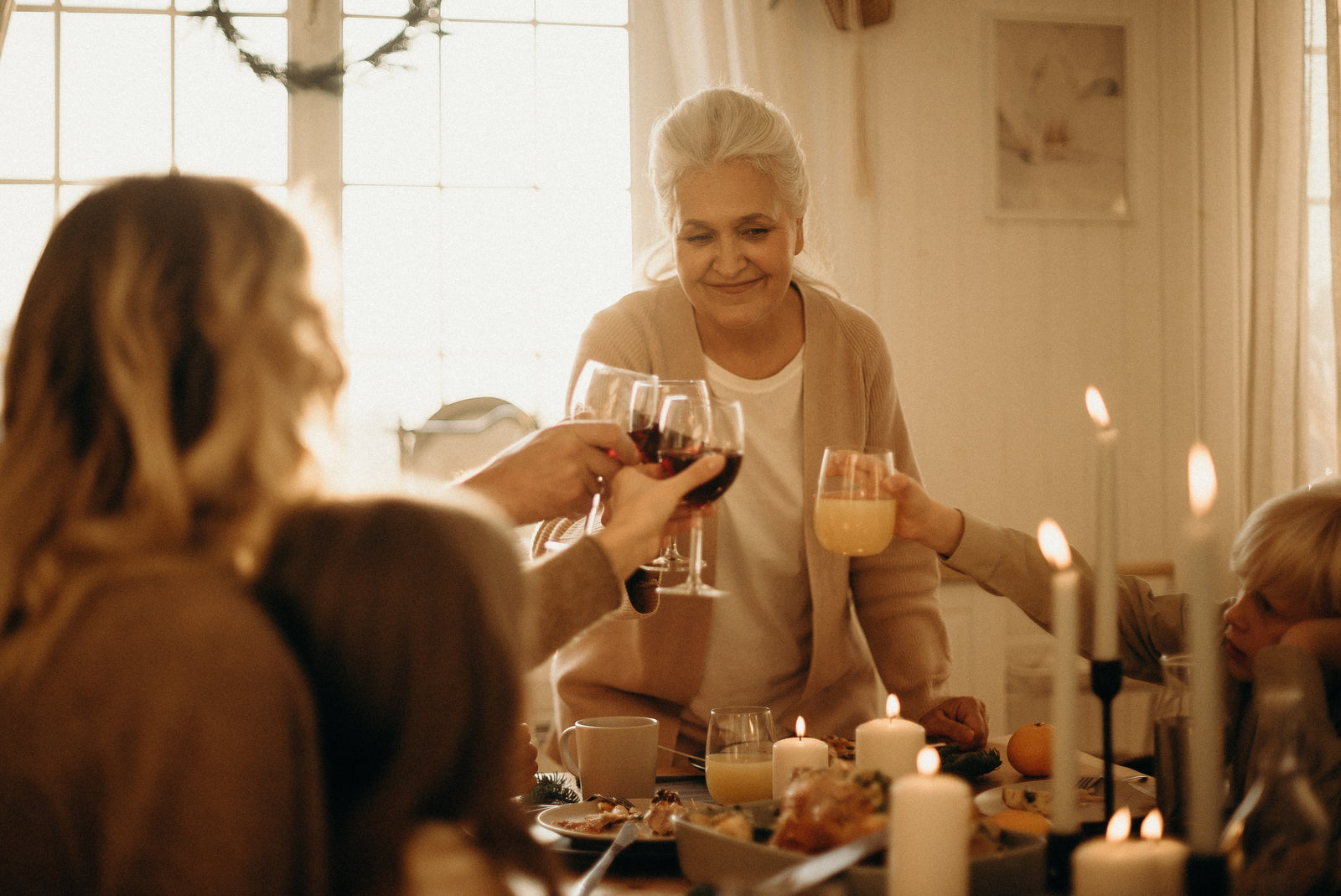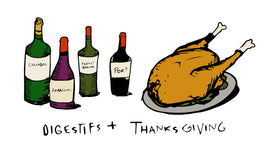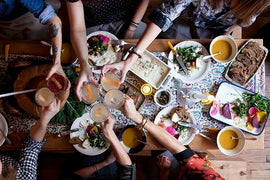Château de Parnay Chemin des Murs” Chenin Sec
Situated on the left bank of the Loire Valley between Angers and Tours, Saumur is a historic city dominated by one of the most famous castles in France. The castle, like many of the great Châteaux of the Loire Valley, was built with the same tuffeau limestone that underlies the vineyards of the region. Excavations created from building castles and palaces resulted in a network of hundreds of miles of underground tunnels, which local vintners have taken advantage of as ready-made wine cellars. Saumur is also a massive wine appellation and produces about two million cases per year of wines of all colors. Perhaps most famous for its sparkling wines, Saumur also produces excellent still wines. Chenin Blanc plays the leading role among the white varietals, and Cabernet Franc is the primary grape for the red and rosé wines of this region, though Cabernet Sauvignon and Pineau d'Aunis often play minor blending roles as well.
Just west of the city of Saumur, near the town of Martigné-Briand, the Loire undergoes a grand transformation, a subtle shift in the color of the freshly tilled soils; they grow a bit lighter and tinged with grey. The types of trees change too, from pine and fir to more deciduous species like chestnut. This area marks the end of the Armorican Massif, the ancient mountain chain—now eroded to metamorphic and volcanic rocks—that covers much of northwestern France, and the beginning of the Paris Basin, the ancient seabed with limestone-derived soils that blanket much of central France. It is an elemental shift, from fire to water. The shift helps to explain the distinguishing qualities of Saumur wines. While Saumur may be tied to the Anjou geographically, its wines are grown not in the Anjou’s acidic soils but in the first of the alkaline soils that extend for hundreds of miles into Champagne and northern Burgundy. These soils impart an innate freshness in the wines made there.
Château de Parnay is located on a UNESCO World Heritage Site next to the Loire River, in the heart of the Saumur Champigny vineyards. The castle at Château de Parnay dates somewhere between the 10th and 11th century, but in 1794, the castle was attacked and burned by the Republicans. In 1820, the new castle at Parnay, in true Renaissance style, was reconstructed. The property was then purchased in 1887 by Antoine Cristal, who was the inventor of many ground-breaking viticultural techniques. Parnay’s famous “Clos d’Entre les Murs” vineyard, built around 1900 by Antoine Cristal, is a walled vineyard, and truly one of the most unique in the world. Vertical cement walls were constructed in rows and the vines were planted on the north side. As the vines grew, they were trained to grow through a hole and "cross" the wall to allow the foliage and grapes to enjoy full southern exposure and sunshine. The estate was bought in 2006 by Mathias Levron, winemaker, and his partner Régis Vincenot, investor. The vineyards cover 28 hectares, made up of four lots of parcels, all located on clay-limestone soil. Following years of restoring the vineyards, the wines became certified ECOCERT (organic) in 2013.
Château de Parnay’s “Chemin des Murs” is the little brother of the famous “Clos d'Entres les Murs”! Made from 100% Chenin Blanc, the grapes undergo a slow fermentation at cold temperatures (5 degrees Celsius) to retain freshness. Once fermentation is complete, the wine is aged on its fine lees in stainless-steel tanks and oak barrels. Château de Parnay’s Chemin des Murs has aromas of citrus, lemon grass, apricot, peach and quince. There is a noticeable freshness coming from the clay limestone terroir of Saumur. The wine is round on the palate, with intense fruit flavors that linger for a delightfully long time. Enchanting as an aperitif, this beautiful Chenin will go perfectly with all the noble fishes of lakes and rivers (Arctic char, trout, pike) grilled simply or with sauces. Try it with lobster, pan-seared scallops, a plate of smoked fish, chicken in a cream sauce, veal sweetbreads deglazed with lemon juice, or pasta ala carbonara or al pesto.
Château de Parnay’s “Chemin des Murs” is $25.00/bottle, $270.00/case.
Bodegas Riojanas’ Monte Real Gran Reserva
The Rioja wine region is situated in the province of La Rioja and covers an area of 157,000 acres. The region extends for approximately 90 miles along both sides of the Ebro River and is, at its widest, 31 miles, bounded by mountains on either side. In fact, the word "Rioja" is a derivation of the two words "Rio" (River) and "Oja" (name of a tributary of the Ebro, located near the region's southwestern boundary). "La Rioja" has always been a vital part of Spain's history. Phoenicians, Carthaginians, Romans, Moors, and finally, medieval Crusaders have all played a part in the area's history. Ancient sites of Roman wineries still exist in and around the area today. The Rioja wine region is subdivided into 3 subareas: Rioja Alta, Rioja Alavesa and Rioja Baja. Rioja Alta is composed primarily of alluvial soil, calcareous clay and ferruginous clay. As the name suggests, much of this area is in higher altitudes, and covers approximately 45,000 acres. The Rioja Alavesa terrain is "terraced" and consists mostly of limestone and clay and is approximately 25,000 acres. The Rioja Baja is comprised of alluvial clay with large areas of ferruginous and calcareous clay. Generally, wines from the Baja have a higher alcohol content, and the area covers approximately 37,000 acres.
Rioja red wines are classified into four categories. The first, simply labeled Rioja, or “Sin Crianza” (meaning without ageing) is the youngest, spending less than a year in oak. A "Crianza" is wine aged for at least two years, at least one of which is in oak. “Reserva” is aged for at least three years, of which at least one year is in oak. Finally, “Gran Reserva” wines have been aged at least two years in oak and three years in bottle.
125+ year-old Bodegas Riojanas is not a boutique winery. It is a big producer founded at the beginning of the glory years of the region in the 19th century and is located in the heart of the Rioja Alta. Riojanas was established in 1890, and was the result of a collaboration between the Frias-Artacho family – who had a deep-rooted winemaking tradition stretching back centuries – and a Catalan businessman named Rafael Carreras. Around four decades later the company made a major step forward in its development choosing to concentrate solely on bottled wines, and specifically those aged in oak barrels. Today, it owns more than 300 hectares (nearly 750 acres) of vineyards and two wineries in Cenicero and San Vicente de la Sonsierra. As well as Tempranillo plantings, they also own one of the largest surface areas dedicated to Mazuelo and Graciano in the region which bring a touch of individuality to their wines. Together, the wineries house some 30,000 barrels, and their 4,500,000-bottle production spans all styles from traditional to global, but the common thread is always consistency and quality. The founding Frías-Artecho and Artecho-Nieto families still help run the company, and the original 1890 winery is still in full use but has undergone significant and continued expansion (eight in total) incorporating the latest practices and processes to remain a leader within its field.
In the 1930’s, when the family decided to focus exclusively on top quality wines, they brought in the highly-esteemed French winemaker Gabriel Larrendant. Larrendant fell in love with the winery, soils, and grapes and was instrumental in launching their first single-vineyard Rioja. He recognized the El Monte Vineyard as a vineyard of exceptional quality. Situated at 430 meters of altitude, El Monte is a six-hectare plot with vines of up to 40 years-old planted on clay and limestone soils within the Rioja’s Cenicero district.
Bodegas Riojanas’ Monte Real Gran Reserva is 100% Tempranillo. The fruit from the oldest vines are gently taken to the crush pads in tubs, where the clusters are checked one at a time on the sorting tables. The bunches are de-stemmed and after a long maceration, the grapes are crushed and fermented using the latest technology and temperature control. The wines are aged for 24-30 months in only American oak casks and then in bottle for 36 months before being released. Bodegas Riojanas’ Monte Real Gran Reserva is layered and expressive in traditional Rioja form. Red fruit aromas and flavors combine with darker fruit undertones and mingle with leather and savory notes. It has lively acidity on the palate and exhibits excellent overall balance.
Lamb is the classic match for this Rioja Gran Reserva, as the sweet spice and tannins from the American oak complement the sweet, succulent meat. But roasted fowl, beef, pork, tapas and Mediterranean vegetable dishes work well with this versatile wine.
Bodegas Riojanas Monte Real Gran Reserva $29.00/bottle, $313.20/case





